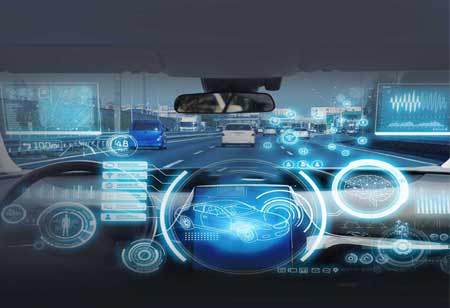THANK YOU FOR SUBSCRIBING
THANK YOU FOR SUBSCRIBING
Be first to read the latest tech news, Industry Leader's Insights, and CIO interviews of medium and large enterprises exclusively from Auto Tech Outlook

By
Auto Tech Outlook | Monday, August 14, 2023
Stay ahead of the industry with exclusive feature stories on the top companies, expert insights and the latest news delivered straight to your inbox. Subscribe today.
Understanding the toxicity of vehicle engine exhaust emissions is essential for mitigating the harmful effects on the environment and human health.
FREMONT, CA: In recent years, extensive research has been conducted on vehicle engine exhaust emissions, primarily focusing on qualitative and quantitative measurements. However, current approval tests and inspections only measure the concentrations of individual compounds or selected groups of compounds. This approach fails to consider highly toxic compounds not directly covered by emission standards, such as polycyclic aromatic hydrocarbons and volatile organic compounds. It does not provide a comprehensive understanding of the actual toxicity of exhaust gases and their impact on living organisms. Therefore, there is a growing need to explore the actual toxicity of engine exhaust gases through innovative approaches that combine in vitro biological methods and chemical analyses.
The development of in vitro biological methods offers a groundbreaking approach to assessing exhaust gas toxicity and addressing the problem of air pollution. By utilizing microscopic analysis of cells, researchers can evaluate the impact of exhaust gas on living organisms at a molecular level. These studies provide an opportunity to definitively determine the actual toxicity of specific gas mixtures and make significant contributions to the field of molecular biology. Interestingly, recent data indicate that cells exposed to exhaust emissions from older-generation vehicles exhibit higher survival rates than newer vehicles. This finding highlights the need for urgent action to reduce pollutant emission levels and transform production technologies responsible for significant pollution.
The automotive industry has long recognized the importance of minimizing the harmful impact of exhaust gases on the environment. This led to the adoption of increasingly stringent European emission standards for commercial vehicles. Over the past three decades, these standards have evolved to define permissible levels of harmful combustion products. Vehicle manufacturers face ongoing challenges to meet these requirements and bring compliant vehicles to the market. As a result, it is crucial to continually evaluate the accuracy, effectiveness, and health improvements resulting from the adopted standardization.
The policy implemented by a country has a profound influence on the health of its inhabitants, the condition of the environment, and human behaviour. While electromobility is gaining momentum, internal combustion engines will remain significant energy sources for years, particularly when assessing emitted gases and their impact on living organisms. The current economic decline in many countries has led to decreased sales of modern vehicles, including those with electric drives. Experts predict a rise in the rental of young used vehicles and increased demand for repair and maintenance services. Furthermore, the interest in biofuels, potentially reducing carcinogenic pollutants, is expected to grow. Consequently, studies focusing on the emission of harmful compounds from internal combustion engines and their effects on human health remain crucial for further development.
By adopting innovative approaches that combine in vitro biological methods and chemical analyses, researchers can gain deeper insights into the impacts of exhaust gases. This knowledge will drive the development of effective strategies to reduce pollutant emission levels, improve air quality, and safeguard public health. As the automotive industry continues to evolve, policymakers, manufacturers, and researchers must work together to address the challenges associated with engine emissions and strive for sustainable and environmentally friendly transportation solutions.
 Copyright © 2025 AutoTech Outlook. All Rights Reserved | Privacy Policy | Subscribe | Sitemap | About us | Feedback Policy | Editorial Policy
Copyright © 2025 AutoTech Outlook. All Rights Reserved | Privacy Policy | Subscribe | Sitemap | About us | Feedback Policy | Editorial Policy 



